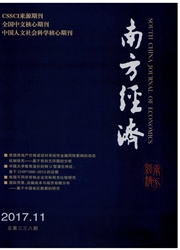

 中文摘要:
中文摘要:
本文利用1989—2011年CHNS数据,基于明瑟工资方程测量中国教育收益率,对其在较长时间段上的连续变化趋势分析发现:相对性和绝对性情境下教育收益率在样本区间都呈现上升趋势;不同教育水平的收益率存在边际报酬递增现象;初中教育水平和小学教育水平的收益率并不存在显著差异。进一步讨论后发现,工作岗位对劳动者综合素质的要求、企业对劳动者需求下降的差异性、劳动力市场评价体系的缺失、就业市场中的信息不对称、特定历史阶段的发展战略和当前经济转型缓慢等因素造成了大学生就业难和父母对子女高等教育投资热情高居不下并存的现象。本文结论不仅对正在大力实施创新驱动发展战略有重要现实意义,还对正在开展的新一轮教育改革具有一定的实践启示。
 英文摘要:
英文摘要:
China has experienced several reforms in the field of education and has made outstanding achievements since the 80s of last century. To have a better understanding of what kind of pattern the returns to education followed in China, this study, applying the CHNS data from 1989 to 2011, and using Mincer wage equation, provides solid evidences. Results show that there have been a dramatic increase in returns to education not only in the total sample, but also in the subsamples divided by classified education level. Returns to education are decreasing successively from higher education, secondary education to primary education, and the mean of them across the whole periods are respectively 0. 0594, 0. 0451 and 0. 0158. Difference of returns to education between primary school and junior middle school are not statistically significant because of the compulsory education policy implemented earlier. Finally, this study discusses the possible reasons that would aggravate the logical contradiction between difficulty in college students' employment and warm enthusiasm of parents' investing in children' s schooling, and makes some suggestions about the current reforms in the field of education in China.
 同期刊论文项目
同期刊论文项目
 同项目期刊论文
同项目期刊论文
 期刊信息
期刊信息
